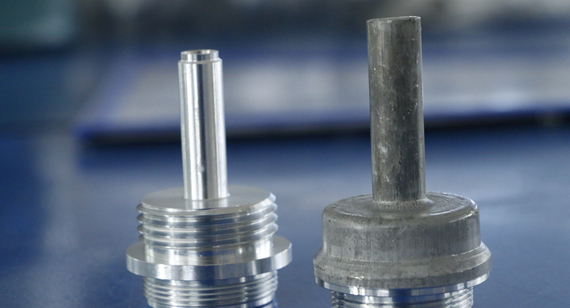15 years one-stop China custom CNC machining parts factory

Hey there I’m VMT Sam!
With 25 years of CNC machining experience we are committed to helping clients overcome 10000 complex part-processing challenges all to contribute to a better life through intelligent manufacturing. Contact us now
 145 |
Published by VMT at Feb 22 2024
145 |
Published by VMT at Feb 22 2024
Introduction:
In the manufacturing process of CNC machined parts, surface roughness is a critical indicator of part quality. Surface roughness not only affects the appearance of the part but also plays a significant role in its performance and lifespan. Therefore, accurate detection of surface roughness in CNC machined parts is crucial. This article introduces surface roughness detection methods for CNC machined parts and explores how to ensure the accuracy and reliability of detection in practical production.

I. Causes of Surface Roughness in CNC Machined Parts:
Various factors during CNC machining can contribute to changes in the surface roughness of parts. Factors such as tool wear, selection of cutting parameters, use of coolant, and the material of the workpiece can influence surface roughness. Understanding these factors is essential for better control of the machining process to improve surface quality.

II. Surface Roughness Detection Methods for CNC Machined Parts:
Touch Detection Method:
Assessment of the part's surface through tactile perception is a traditional method. This method heavily relies on the experience of the inspector, introducing some subjectivity. However, in certain cases, touch detection can be a quick and practical method, especially for small or simple parts.
Visual Detection Method:
Observing the part's surface using magnifying glasses or microscopes to evaluate its roughness. This method depends on the visual judgment of the inspector, and the accuracy of results largely depends on the inspector's experience.
Instrument Detection Method:
Using surface roughness measuring instruments is one of the most accurate methods. These instruments employ sensors for contact or non-contact measurement of the surface, and electronic systems process the data to provide detailed surface roughness parameters. Although instrument detection is highly accurate and reliable, it requires corresponding equipment and expertise.

III. Improving the Accuracy of Surface Roughness Detection in CNC Machined Parts:
Regular Calibration of Measurement Equipment:
To ensure the accuracy of measurement equipment, regular calibration should be performed. Standard samples should be used during calibration to test the equipment and ensure its measurement results meet requirements.
Training of Inspection Personnel:
The skills and experience of inspection personnel are crucial for the accuracy of surface roughness detection. Regular training sessions for inspection personnel should be conducted to enhance their professional knowledge and skills. Additionally, ensuring that inspection personnel understand the application scope and limitations of various detection methods is essential.
Control of Machining Process:
To guarantee the quality of the part's surface, control measures should be implemented at the source of the machining process. Optimizing cutting parameters, selecting appropriate tools, and using coolant effectively can minimize variations in surface roughness, reducing the difficulty and error in subsequent detection.
Standardization of Detection Methods:
To ensure consistent surface quality among different batches and suppliers, standardized detection methods should be established. By defining uniform evaluation criteria, sampling locations, and quantities, the comparability of detection data across different stages can be ensured.
Data Analysis and Improvement:
Statistical analysis of detection data can reveal trends and influencing factors in surface roughness variations. Based on this data, continuous improvement of the machining process can be implemented to enhance surface quality and reduce the probability of non-conforming products.
IV. Case Analysis and Practical Application:
To illustrate the practical application of surface roughness detection in CNC machined parts, a specific case study is presented. A mechanical manufacturing enterprise encountered surface quality issues during CNC machining, leading to inconsistent product performance. To address this, the company took measures such as conducting surface roughness detection on parts from different batches and suppliers, comparing touch, visual, and instrument detection methods, optimizing the machining process, establishing standardized detection procedures, and regularly calibrating and training personnel. These measures effectively improved the surface quality of CNC machined parts, enhancing customer satisfaction.
V. Conclusion and Outlook:
Accurate detection of surface roughness in CNC machined parts is crucial for ensuring product quality and performance. Through a comprehensive understanding of the causes of surface roughness, mastering the characteristics and practical techniques of various detection methods, and implementing effective quality control measures, accurate assessment and continuous improvement of surface roughness in CNC machined parts can be achieved. As technology advances and the industry develops, surface roughness detection in CNC machined parts is expected to become more intelligent and automated, providing robust support for increased production efficiency and product quality.
Ready To Start Your Next Project?
Get Instant Quote

Request a Free Quote
Send us a message if you have any questions or request a quote. We will get back to you ASAP!